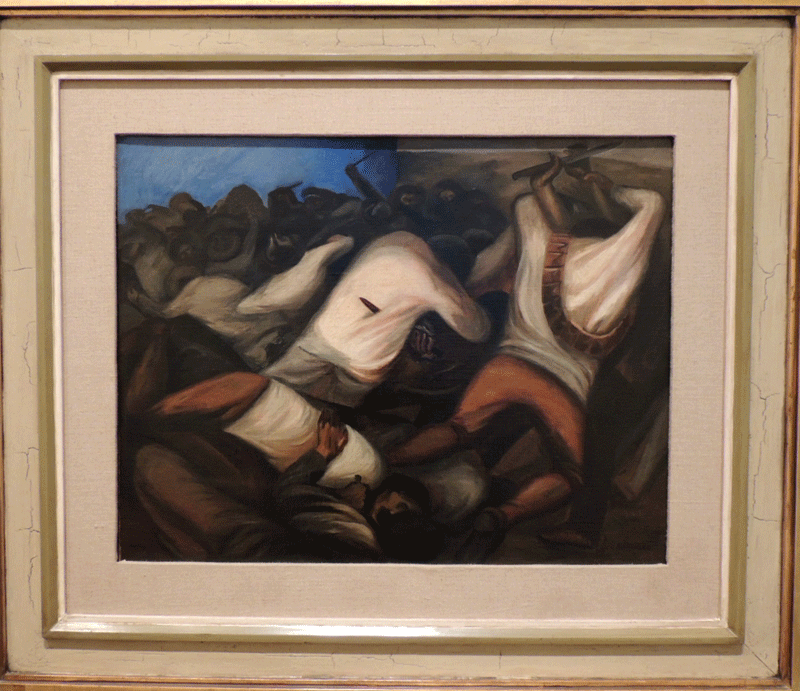Source: WTL photograph© at the Special Exhibition of "Paint the Revolution: Mexican Modernism 1910 - 1950," at the Philadelphia Art Museum, December 13, 2016.
Image:
"Combat" by José Clemente Orozco (1883-1949), 1925-28. Oil on canvas.
Comments: Orozco, along with Rivera, Siqueiros, and Tamayo, was one of the four major internationally renowned Mexican painters and muralists of the first half of the 20th century. He was an leftist engagé artist like Rivera and Siqueiros. In 1921, he lost his left hand in an explosion accident when he was making fireworks. As he himself recognized, the satirical illustrations by José Guadalupe Posada (1852-1913), who in 1911 to 1913 created a series of the iconic Mexican images of the Calavera Catrina (see especially: => Calavera Catrina and => Rivera's dream mural). Like many other Mexican artists, he attended the Academy of San Carlos in Mexico City. As seen in "Combat" above, he featured human suffering with less "realism" than, for instance, Rivera. His international career included commissioned murals in Mexico (Mexico City, Orizaba, Guadalajara, and Jiquilpan), and, from 1927 to 1934 in the following places in the United States: Pomona College (Claremont, California), New York City, and Dartmouth College (Hanover, New Hampshire).
For other paintings by Orozco, see: => #12; => #13; and => #14.
Humanities Questions: (A) Comment on the way in which Orozco depicts the kind of combat he saw, and, herein was documenting, that occurred during the Mexican Revolution and later during the terrible and violent religious Cristeros revolt of 1926 to 1929 in Mexico. (B) Comment on the effect of the short sword thrust through the body of the white-clad peasant in the very center of the painting.


